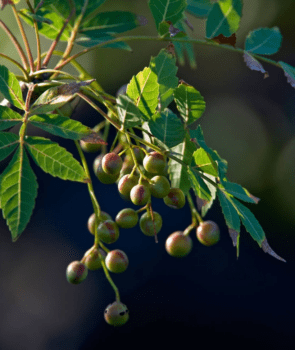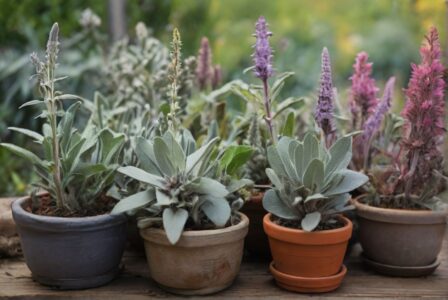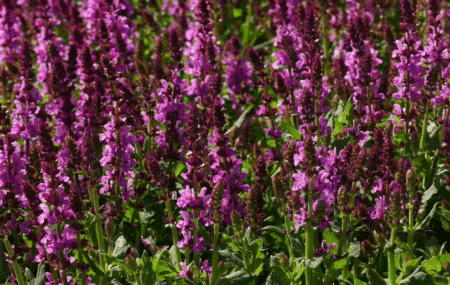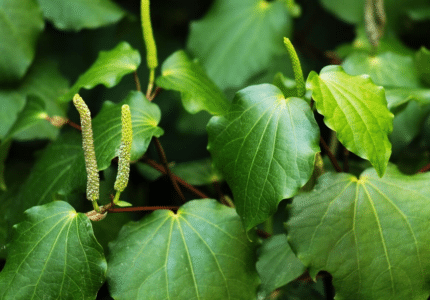- Interesting facts about Bursera graveolens
- History of Palo Santo
- Palo Santo in shamanism
- Palo Santo uses
- Growing Palo Santo
- Bursera graveolens: seeds vs. cuttings
- Cultivation areas
- Risks and important information
- Conclusion
Here you can find our Bursera graveolens products!
Welcome to our blog post about Palo Santo - the sacred wood of South America! In this article, you will learn everything you need to know about this special, extremely aromatic wood, its history and possible uses. We also look at how Palo Santo is used in shamanism and how you can grow it yourself. We shed light on the differences between using seeds and cuttings, present cultivation areas and provide important tips and risks. Finally, we draw a conclusion. Immerse yourself in the fascinating world of Palo Santo!
1. interesting facts about Bursera graveolens
Things to know about Palo Santo If you are interested in the sacred wood of South America, there are a few things you should know. First of all, it is important to understand that Palo Santo has a long history and has been used in shamanism for centuries. It is also used in medicine and as a room fragrance. When it comes to using Palo Santo, there are many options. You can burn the wood and use the smoke for cleansing or healing rituals or simply enjoy the pleasant scent. In addition, the oil from the wood can be used for massage or skin care.
When growing Palo Santo, you should make sure that you use either seeds or cuttings. Both have their advantages and disadvantages, but if you want to ensure that your plants are healthy and strong, we recommend taking cuttings. There are several growing regions for Palo Santo in South America, including Ecuador and Peru. However, as more and more people show interest in this particular wood, there is a risk of overuse. For this reason, it is important to ensure that your Palo Santo has been grown ethically. Overall, Palo Santo offers a variety of benefits and unique properties. However, if you are interested in using or growing this sacred wood from South America, it is important to do your research to avoid risks and pay attention to important tips.
2. history of Palo Santo
Palo Santo is a sanctuary in South America whose use has been known for centuries. The history of the sacred wood goes back to the Incas, who used it as part of their spiritual rituals. It was also used by other indigenous peoples such as the shamans of the Andes and Amazon region to dispel negative energies and attract positive energy. While Palo Santo fell into obscurity over the years, today it has regained importance and is valued worldwide for its healing properties. Although the use of the wood is still associated with certain traditions, there are now many ways to use Palo Santo in a modern way. From its beneficial effects on the body and mind to the aromatherapy experience and room cleansing - this remedy has a lot to offer!
3. palo santo in shamanism
Palo Santo has a long tradition in shamanism as a sacred wood. Shamans use it in their ceremonies to dispel negative energies and attract positive energies. It is often burned or used as incense to create a deep spiritual connection. The unique property of Palo Santo, its ability to dissolve negative energy while having a calming effect, makes it an indispensable tool for the practices of shamanism. Many people also appreciate the pleasant scent of Palo Santo when burning incense in their own meditation practice or simply to relax after a long day. So if you are interested in shamanic practices or simply interested in the spiritual properties of plants, Palo Santo wood could be just the thing for you!
4. possible uses of Palo Santo
When it comes to the use of Palo Santo, there are numerous possibilities. On the one hand, the wood is often used as incense, but it is also used in the cosmetics and perfume industries. However, its use in shamanism is particularly popular, as the wood has a strong spiritual effect and is used in ceremonies. Inhaling the smoke is said to help dispel negative energies and clear the mind.
But Palo Santo can also be helpful in everyday life: For example, by lighting a small piece of the wood and placing it in a room or rubbing yourself down with the smoke - this is said to reduce stress and create a feeling of relaxation. However, it is important to note that not everyone can tolerate the ritual of burning incense - asthmatics in particular should be careful or avoid it altogether. In any case, you should only use certified Palo Santo to ensure that no illegal logging methods have been used.
5. grow Palo Santo
There are various ways to grow Palo Santo. One of them is to sow seeds. This requires patience and time, as it can take several years before the plants are large enough to be harvested. Alternatively, cuttings can be used to grow new trees. This method is quicker and easier than growing from seed. However, it is important to ensure that the cuttings come from healthy trees and must be carefully nurtured to ensure successful growth.
The cultivation area for Palo Santo is limited to certain regions in South America such as Peru and Ecuador. This is where the trees grow best under the respective climatic conditions and can develop their full potential. However, there are also risks involved in the cultivation of Palo Santo: Excessive deforestation or the sale of illegally harvested wood can lead to the tree's populations being threatened. It is therefore important to ensure that the wood only comes from sustainable sources. Overall, the cultivation of Palo Santo offers an opportunity to use this sacred plant in a responsible way while helping to protect its natural habitats.
6. bursera graveolens: seeds vs. cuttings
If you decide to grow Bursera graveolens yourself, you have two options: seeds or cuttings. Seeds are the trees' natural method of reproduction and can be an interesting challenge. However, they require a lot of patience and time to germinate and grow. Cuttings, on the other hand, are branches of the tree that have already grown and can be rooted in moist soil. They have the advantage that they grow faster and can therefore be harvested more quickly. Ultimately, the decision is up to you and your personal preferences. However, always bear in mind important information about caring for your plants and the possible risks of growing foreign plant species in your home country.
7. growing regions
If you are interested in growing Palo Santo, you should know that it only grows in certain regions of South America. The trees are mainly planted and harvested in Peru and Ecuador. It is important to pay attention to sustainable cultivation so as not to damage the ecosystem. There are also other countries such as Brazil or Colombia where Palo Santo can be found, but these areas are less well known and the quality of the wood can vary. So if you are planning to grow your own Palo Santo, you should inform yourself about the conditions in the respective growing area and make sure that no illegal practices are used. It is recommended to use cuttings instead of seeds as they grow faster and have a higher survival rate. With careful care, the trees can be harvested after about 4-5 years.
8 Risks and important information
There are some risks and important tips that you should bear in mind when using or growing the "sacred wood". Firstly, care should be taken to ensure that the wood does not come from endangered species and has been legally acquired. It is also important to know that it can cause allergic reactions and should therefore be used with caution. In addition, pregnant women and children should avoid the scent of the wood. When growing Palo Santo, it is advisable to only use cuttings to ensure that the plants are genetically identical and therefore of high quality. They should also be planted in a suitable climate, as they are sensitive to frost. However, if you are aware of all the risks and follow all the important instructions, you can use and enjoy the sacred wood of South America without any worries.
9. conclusion
After all this information about the sacred wood of South America, the question remains: is it worth growing and using Palo Santo? The answer is clearly yes, but with restrictions. It is important to note that sustainable harvesting and cultivation is necessary to ensure the continued existence of the tree. Also, only products from certified cultivation should be used to ensure that no illegal practices are supported. Palo Santo can offer many benefits - from relaxation to cleansing - but you should also be aware that some people may have allergic reactions to the wood and it is therefore not suitable for everyone. So overall, if you are interested in Palo Santo, make sure you are well informed about its origins and take care to use it responsibly.
Note: The information in this article is for informational purposes only and is not intended to replace the advice of a physician or other healthcare professional. Always consult a doctor before using any new herbs or supplements. Furthermore, you should always check whether certain plants are permitted in your country before growing them.
















